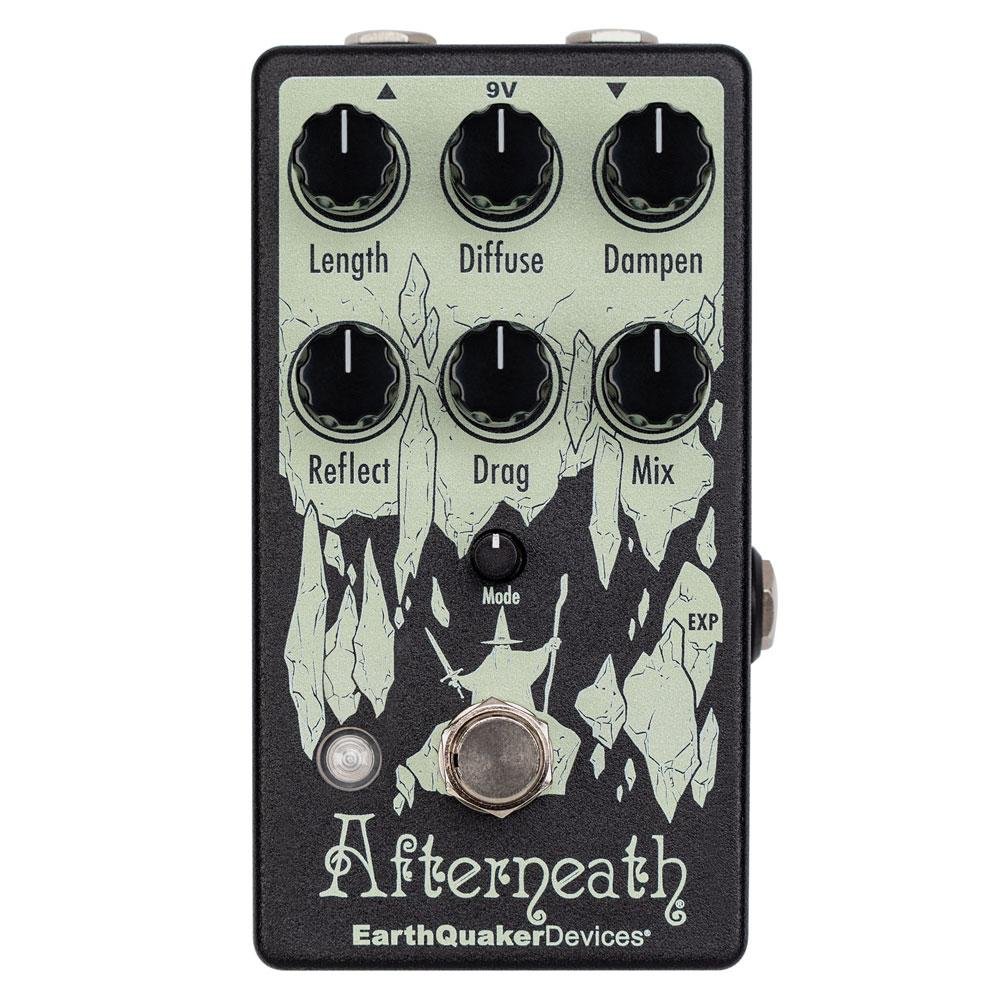
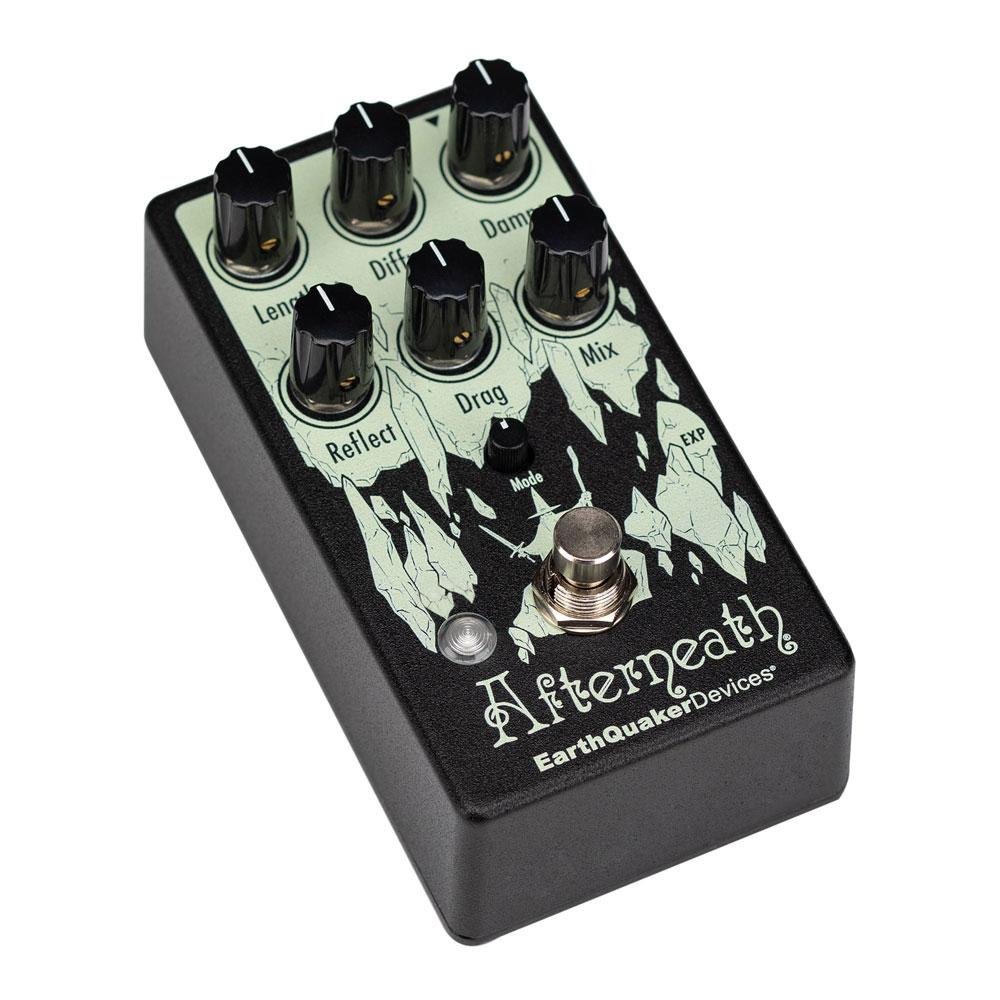

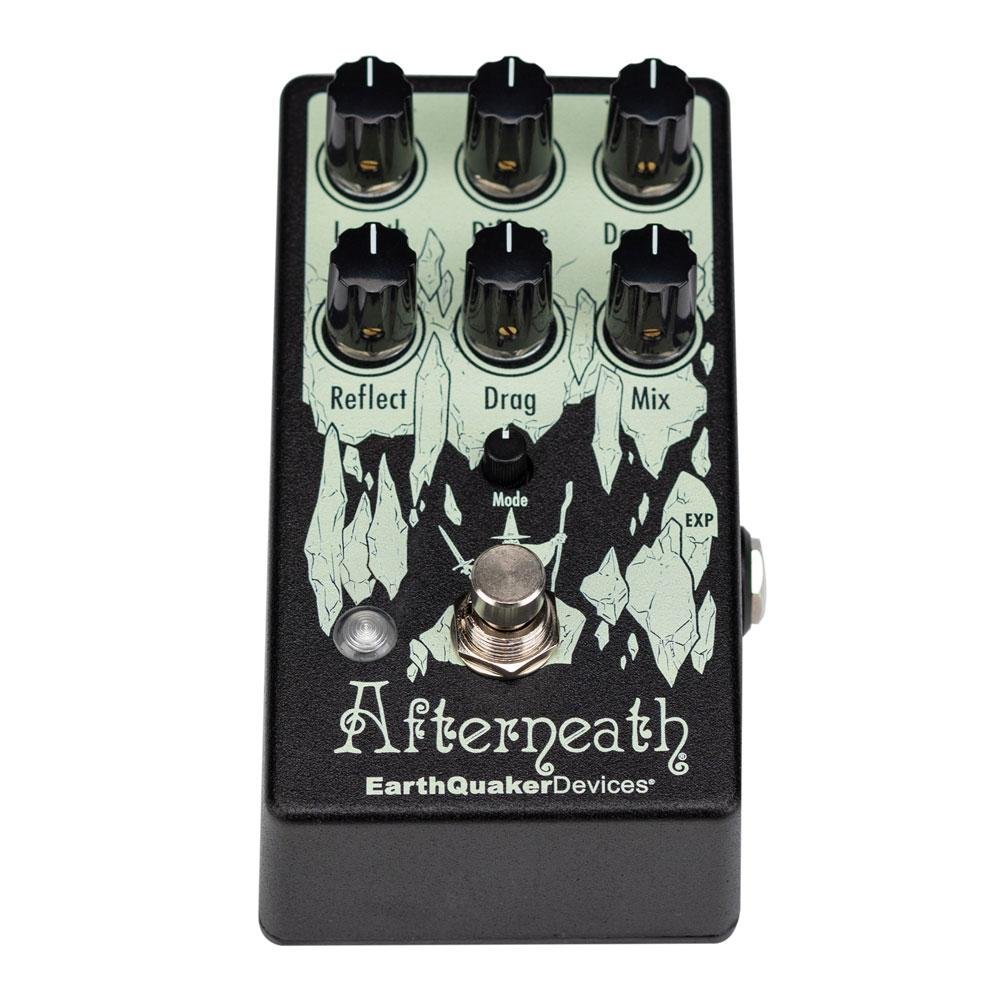
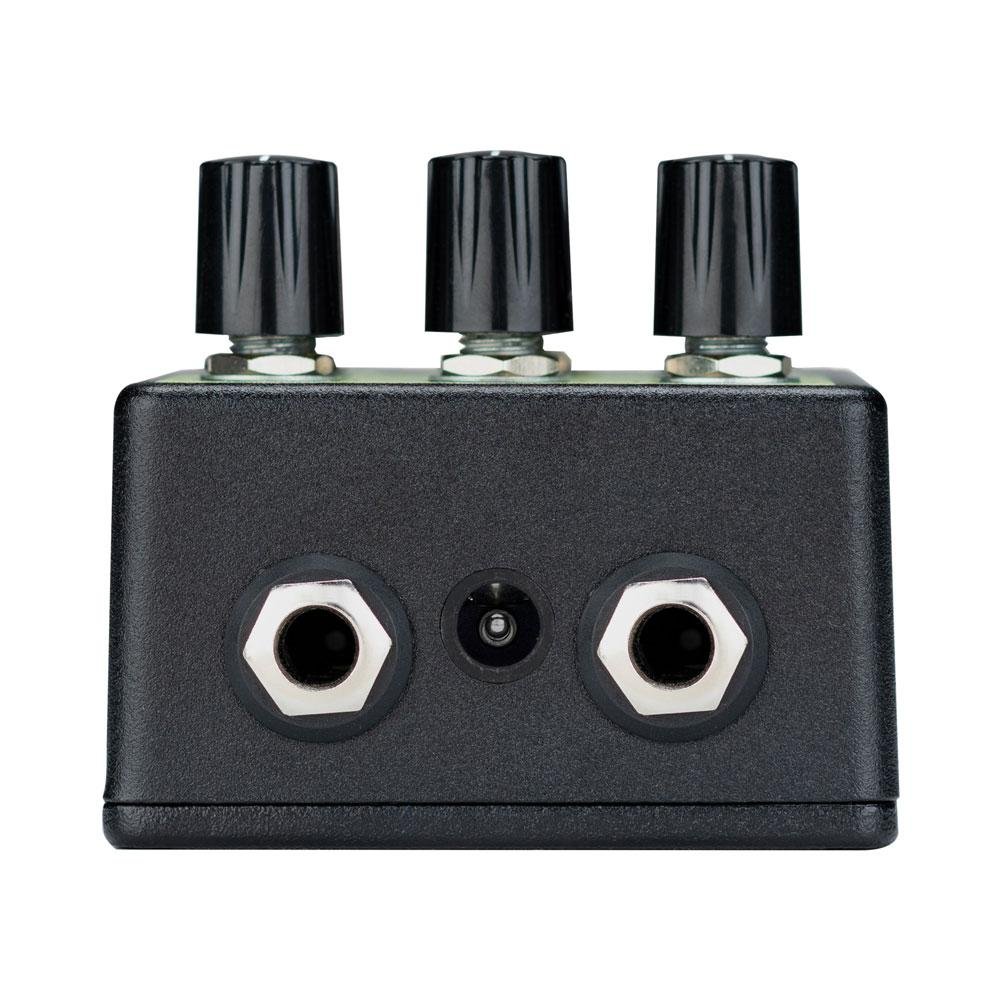
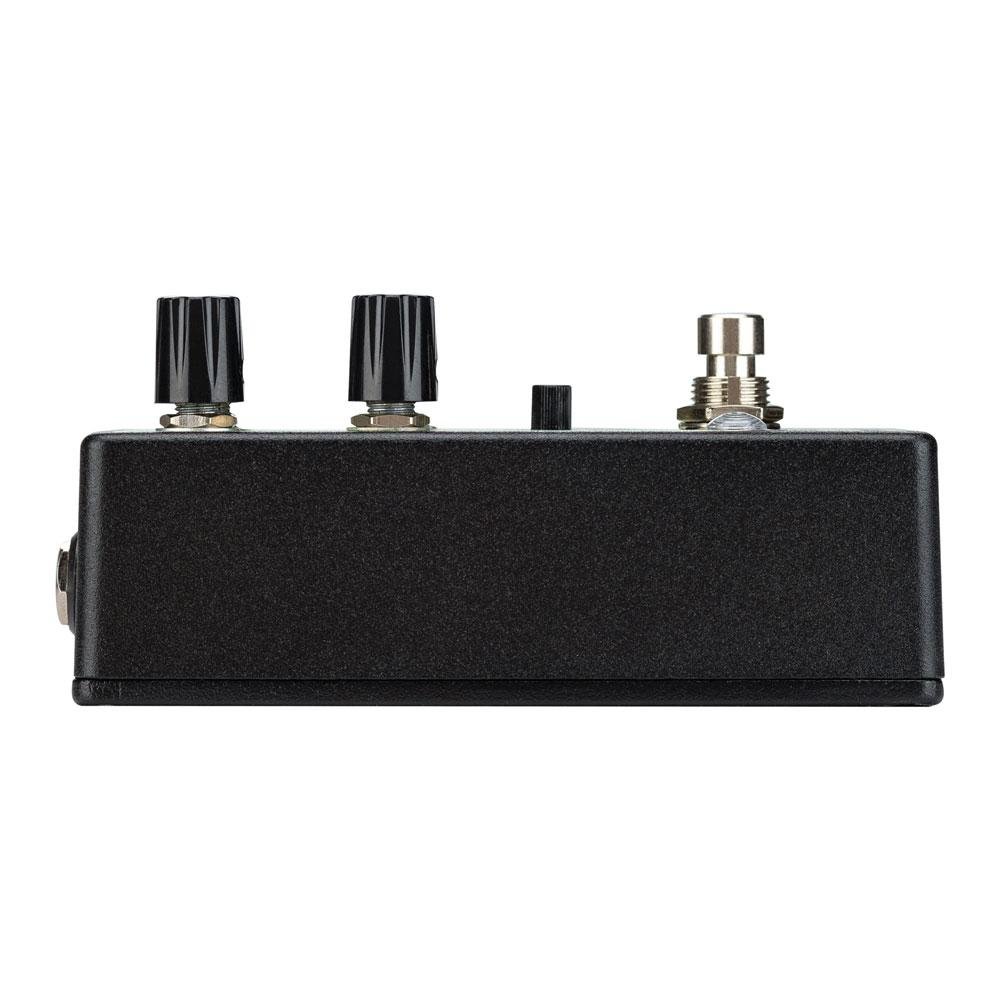
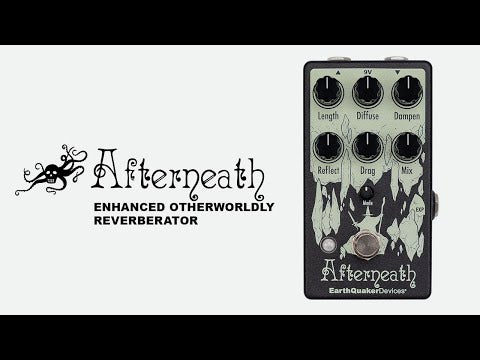
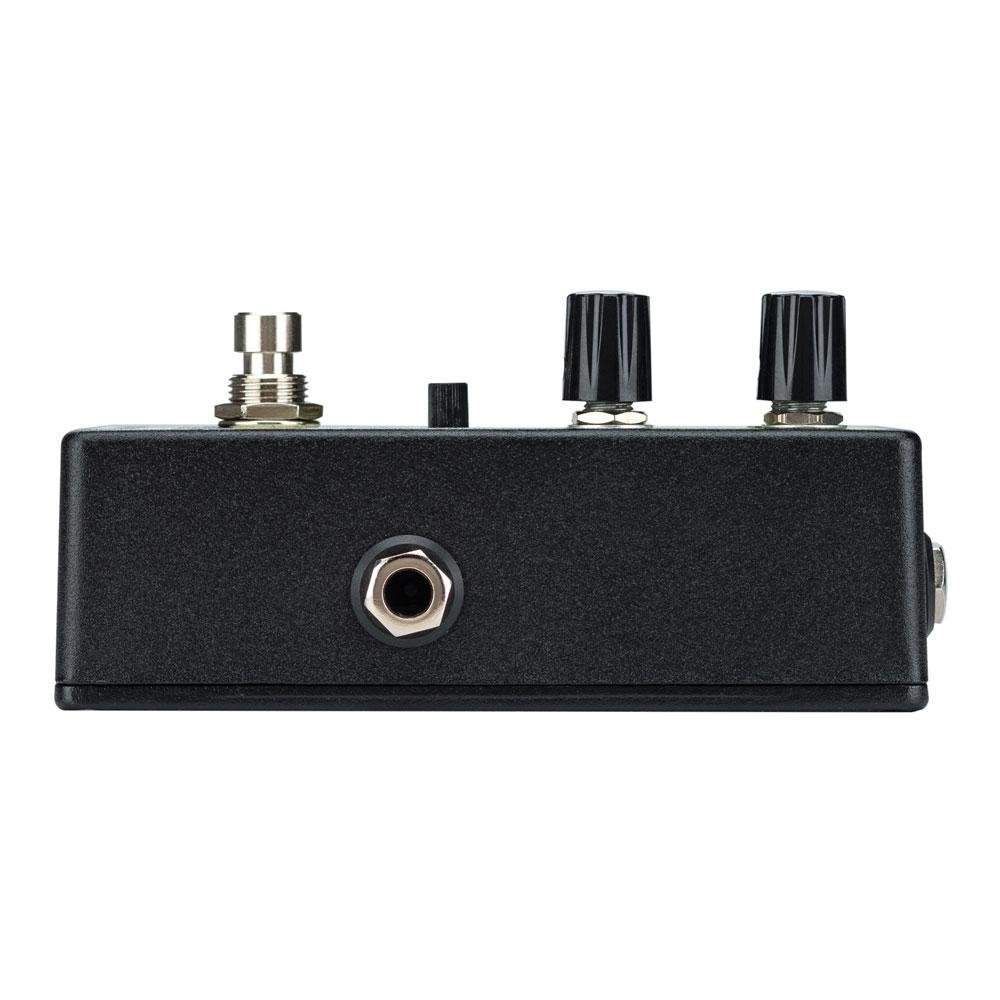
Earthquaker Devices Afterneath Otherworldly Reverberator - V3
Take a moment to consider your Intelligence and Wisdom scores, as well as your spell inventory before proceeding further. You have seven spells at your disposal"¦
Will you cast "Length," which controls the decay length of the reverb?
What about "Diffuse," which adjusts the spread of the reverb? With your wand (or just the knob) turned counterclockwise, the reverb is sharper with more attack, resulting in a stuttering sputter of individual early reflections. Clockwise casts a washy, more ambient-sounding hex.
Overwhelmed by fear, you hastily cast "Dampen!" As you shout the incantation, you notice that a counterclockwise variation of this spell results in brighter tones, while as you rotate your wand clockwise; you hear darker tones with a mellower top-end. It's almost as if your magic changes the hardness of the cavern walls, and thus the tonal characteristics of the reverb!
Elsewhere in your book of magic is "Drag," which separates the individual digital delay lines, literally dragging them through the very fabric of time and space towards an unknown event horizon from which they may never return. Clockwise "Drag" positions will gather the delay lines close together for a more reverb-like effect. Turn the "Drag" counterclockwise, and the delay lines will begin to pull apart for a scattered ping-pong delay effect.
The Drag can be put under voltage or expression control using the "EXP" jack located on the side and operates in 9 different modes which are selected by the small "Mode" control. These modes are: Unquantized, Unquantized with slew, Unquantized volt/octave,
Chromatic scale, Major scale, Minor scale, Pentatonic scale, Octaves & fifths and Octaves. These modes drastically change the way the Drag control functions, especially while using an expression control or CV.
The "Reflect" alters the depth of the cave, and with it the regeneration of the reverb. This acts as a feedback control and will self-oscillate if cast by a high-level user. Turn clockwise for more wash and echoes, counterclockwise for less.
Finally, the "Mix" alters the alchemical balance between the input signal and the effect. The Afterneath does not go fully wet but does lower the level of the input signal as you raise this control to create the appearance of a fully wet reverb.
Modes
The Modes control changes the way the Drag control functions. The LED will change colors indicating which mode you are in.
- Unquantized: Smooth, unquantized response over the operating range
- Unquantized with Slew: Smooth, unquantized response over the entire operating range, but with a musical slew that is reminiscent of turning the varispeed knob on a vintage British tape delay. The "Drag" will lag behind the knob or cv changes, but then quickly catch up.
- Unquantized Volt/Octave: Smooth and unquantized, yet scaled to align with the 1v/octave curve to allow melodic modulation of audio in the buffer, or control the frequency of self-oscillation like a voltage controlled oscillator.
- Chromatic Scale: Quantized 1v/octave to the chromatic scale
- Minor Scale: Quantized 1v/octave to the minor scale
- Major Scale (Lydian): Quantized 1v/octave to the major scale (Lydian)
- Pentatonic Scale: Quantized 1v/octave to the pentatonic scale
- Octaves & Fifths: Quantized 1v/octave to omit all but octaves and fifths
- Octaves: Quantized 1v/octave to omit all but octaves
SPECIFICATIONS
- Dimensions: 4.75 x 2.50 x 2.25 in. (121 x 64 x 57 mm) with knobs
- Current Draw: 100 mA
- Input Impedance: 1 MΩ
- Output Impedance: 500 Ω
Expression Jack
This is an expression pedal control jack for the Drag. The Afterneath requires an expression pedal with a value of 50k, we recommend the Moog EP-3 or similar. While it will work with a standard 10k...
- The Modes control changes the way the Drag control functions. The LED will change colors indicating which mode you are in
- Expression pedal control jack for the Drag. Any expression pedal will work with the Afterneath. Tip is the wiper, Ring is 5v and Sleeve is ground
- Flexi-Switch Technology allows you to simultaneously use momentary and latching style switching
- Uses electronic buffered bypass, it requires power to pass signal and the buffer is always active. You may experience a pop the first time the Afterneath is switched on after power up
- Factory set in "tails mode" This means that the wet signal will naturally decay and slowly fade to silence after the effect is switched off








